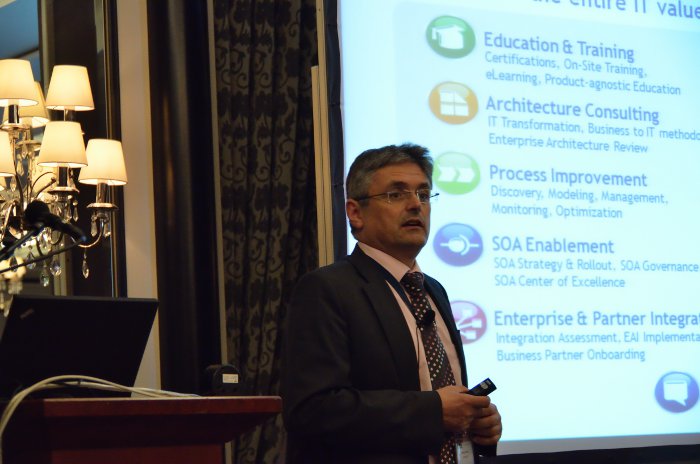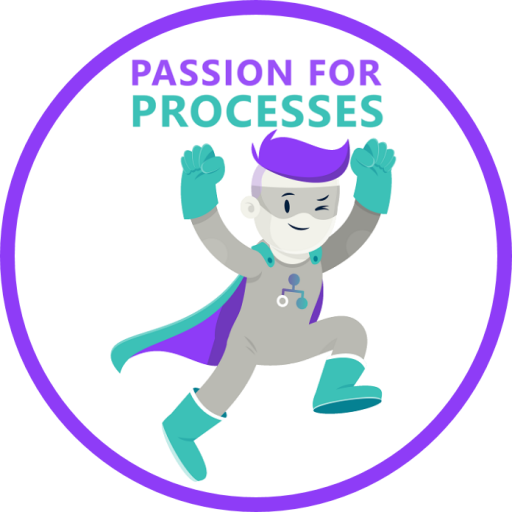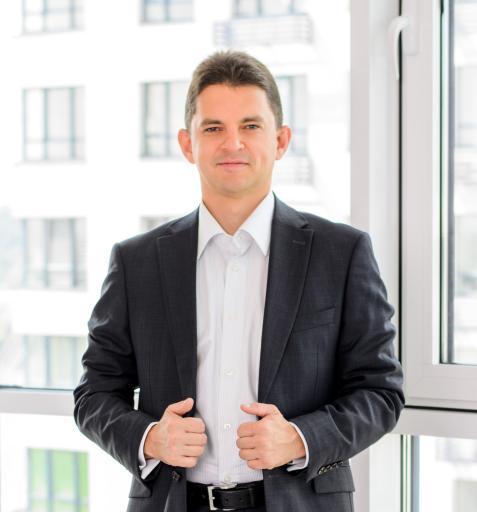
First of all, many thanks to those of you who voted me into this session. Even though I love covering ARIS talks and speeches, it is also very interesting for me to learn something new from the other departments of Software AG.
In this talk, Markus Roser, head of professional services at Software AG, talks about lessons learnt while running modernization projects. He first gives a brief overview of the different offerings of Software AG consulting branches.
Markus first talk about why IT modernization is needed? Instead, one could suggest replacing legacy technology with newer products and technology. But of course the old systems have their value and a proven track of being important for the users. Therefore, there is a need for keep those systems up and running and eventually upgrading them where needed.
Markus stresses the point that IT modernization is not just the matter of having good tools for doing this upgrade, but to also have a clear methodology driving such an effort. Typical aims of such projects are:
- improving maintainability
- breaking monolithic applications into reusable parts
- increasing flexibility
- using modern development tools
- improving ergonomics and navigation
Especially the last point is interesting, because it basically means to put a new user interface, but reuse the existing backend system. In case of a banking system this means that the way how loans are approved hasn't changed that much, but of course today we expect different access to the system like loan self checks in the Internet.
According to Markus, there are different ways how IT modernization can be done, e.g.:
- screen automation - values in existing screens are entered automatically and information from such screens is retrieved automatically, never showing today's users the old screens
- restructuring of programs - breaking up old code, e.g. written in COBOL or PL/I
- accessing data directly - circumvent the existing programs and getting their data from the datastore like an Adabas database
The methodologies shaped by Markus' team during many years of field experience support all those different approaches. In the end, the different components of a legacy system are now available as independent services, which can be used in a service-oriented architecture (SOA).
Markus now goes a little bit deeper into UI modernization. In a first step, the old often text based interfaces are transformed into AJAX based web applications. Afterwards, existing screens are combined and navigation is changed to reflect current needs. This also enables step 3, adding new business functions. The first step is, of course, required, but customers don't want to spend too much money at it, as just transforming a screen to AJAX doesn't add a lot of value. But is a required step to enable the other two steps, which are value-adding.
Now, Markus focuses on rehosting existing mainframe applications. The aim of such projects is to put a mainframe application on a current system like Linux, because each year, fewer experts are available with knowledge of the old mainframe systems. Such a project first requires porting of the code to a current programming language. Here, of course they use automated transformations where possible. In a second step, the ported application must be pass a comprehensive test in the new target platform. Markus illustrates this kind of project using a project they have done at ANAZG, one of the largest pharmaceutical wholesalers in Germany. Here, z/OS applications were ported to Linux.
Ah, and now we are back to familiar topics. Markus says it's not just about bringing legacy technology to new platforms and frameworks, but to also update the processes those legacy applications were used in. He cites an example of social support ministry in the German federal state of Saarland. Here, they didn't just port the IT system to handle social support requests to a new platform, but they also improved the processes handled with this system so that today this process is 100% digital without any paper passing around anymore.
Especially this last point confirms that processes are everywhere and it is no surprise that the joint claim of Software AG is Business Process Excellence.
Note: Check this overview post to get all links to the other live posts from ProcessWorld 2011 in Berlin














